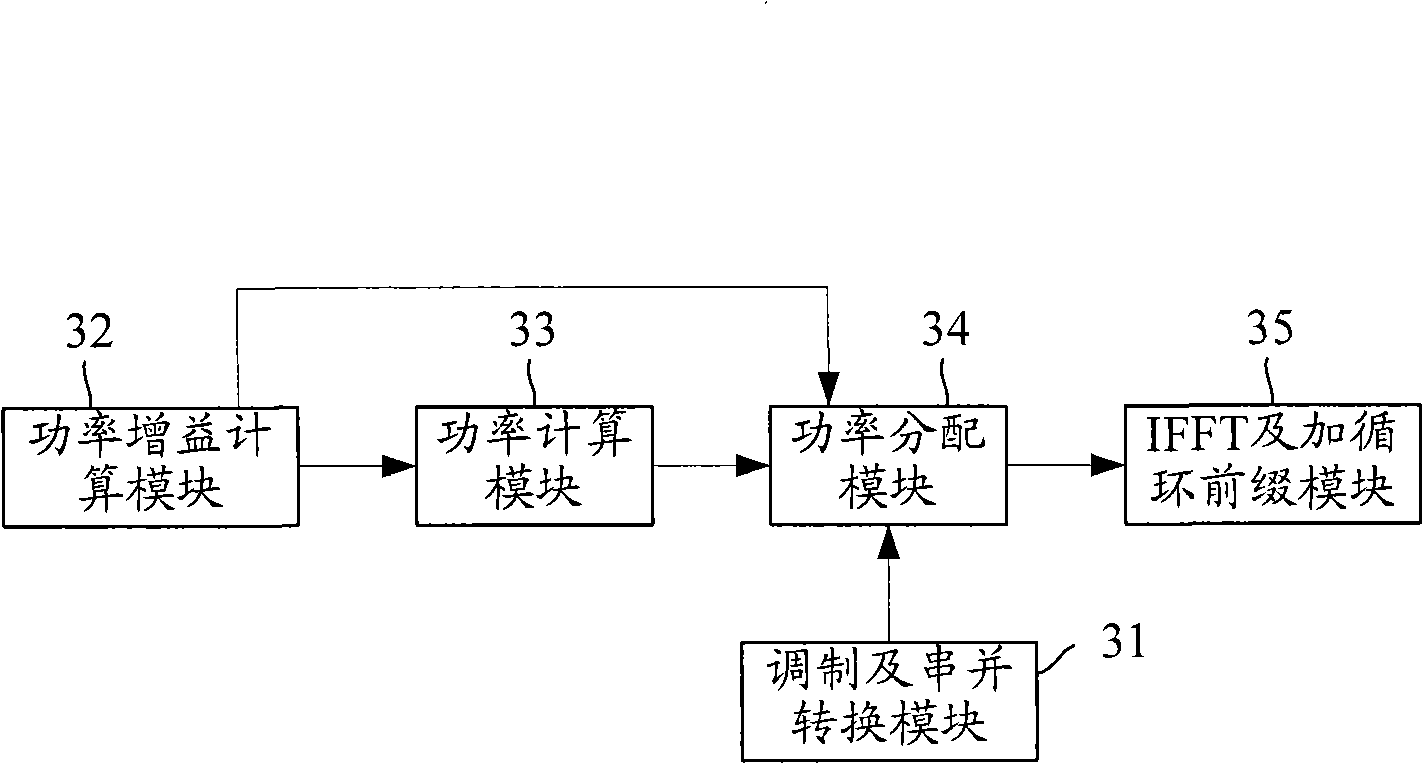Power distribution method, system and sending terminal
An allocation method and technology at the transmitting end, applied in the field of signal processing, can solve the problem that the distributed MIMO-OFDM system does not give power allocation, and achieve the effect of improving system performance
- Summary
- Abstract
- Description
- Claims
- Application Information
AI Technical Summary
Problems solved by technology
Method used
Image
Examples
Embodiment Construction
[0026] Since in an OFDM system using a fixed modulation scheme, the bit error rate is mainly determined by some subcarriers experiencing the most severe fading, therefore, when the total transmission power of the system remains unchanged, increasing the signal-to-noise ratio (SNR) is relatively The performance of the system can be effectively improved by reducing the power of a small subcarrier while reducing the power of a subcarrier with a large SNR. Therefore, in the embodiment of the present invention, according to the channel and noise estimation information of the receiving end, the transmitting end allocates power to the signals on each subcarrier to be sent to the receiving end, so that the SNR of each subcarrier is maximized and tends to be consistent.
[0027] The following gives the derivation process of how to obtain the power allocation vector of each sub-carrier under the condition that the total transmission power of the system remains unchanged and the SNR of ea...
PUM
 Login to View More
Login to View More Abstract
Description
Claims
Application Information
 Login to View More
Login to View More - R&D
- Intellectual Property
- Life Sciences
- Materials
- Tech Scout
- Unparalleled Data Quality
- Higher Quality Content
- 60% Fewer Hallucinations
Browse by: Latest US Patents, China's latest patents, Technical Efficacy Thesaurus, Application Domain, Technology Topic, Popular Technical Reports.
© 2025 PatSnap. All rights reserved.Legal|Privacy policy|Modern Slavery Act Transparency Statement|Sitemap|About US| Contact US: help@patsnap.com



